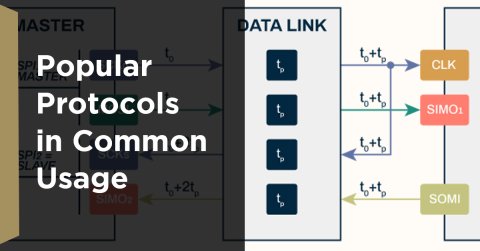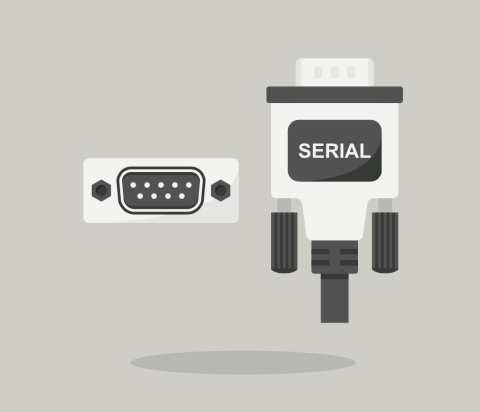High-Speed PCB Design: Ensuring Signal Integrity, EMI Mitigation, and Thermal Management

High-speed signal integrity is crucial in modern PCB (Printed Circuit Board) design, impacting performance, reliability, and compliance. Designing high-speed PCBs involves managing signal integrity issues such as crosstalk, electromagnetic interference (EMI), and thermal management. This article explores some essential aspects of high-speed signal integrity, including crosstalk, ground plane strategies, electromagnetic interference (EMI), and thermal management, providing practical insights and examples. Let's delve deeper into these concepts, providing expanded strategies and detailed examples.
Electromagnetic Coupling and Crosstalk
-
Electromagnetic Coupling: Signals in adjacent traces can induce electromagnetic fields in one another, leading to interference. This phenomenon is known as electromagnetic coupling and becomes more pronounced at higher frequencies. For example, consider a PCB with closely spaced high-speed data lines. If one trace carries a high-frequency clock signal and the adjacent trace carries a sensitive data signal, the electromagnetic field generated by the clock signal can induce noise in the data signal, causing data errors.
-
Trace Proximity: The closer the signal traces are to each other, the higher the chance of crosstalk. Maintaining adequate spacing between traces is critical to reducing this interference. For instance, in a high-speed Ethernet PCB, differential pairs are routed close together to ensure signal integrity within the pair. However, sufficient spacing is maintained between different pairs to prevent crosstalk.
-
High-Frequency Signals: Higher frequencies generate stronger electromagnetic fields, which can exacerbate crosstalk. Ensuring proper layout and spacing becomes increasingly important as signal frequency increases. An example is RF circuit designs where signals can reach gigahertz frequencies. Special care must be taken to separate RF signal traces from other digital or analog traces to prevent interference.
-
Poor Grounding: Inadequate grounding increases susceptibility to crosstalk. A solid and continuous ground plane provides a low-impedance path for return currents, reducing the risk of signal interference. For example, in a multilayer PCB, a ground plane is placed directly beneath signal layers. This ensures that return currents have a clear path, minimizing the potential for crosstalk.

Eye diagram used in high-speed digital communication analysis, illustrating signal integrity through an open eye pattern, with color gradients indicating signal density and performance.
EMI Mitigation Techniques
-
Proper PCB Layout: Optimizing trace routing, minimizing loop areas, and using ground planes effectively can significantly reduce EMI. For instance, in a high-speed digital design, critical signal traces are routed on internal layers sandwiched between ground planes. This minimizes the loop area and provides effective shielding against EMI.
-
Filtering: Implementing filters such as ferrite beads and capacitors can suppress high-frequency noise and reduce EMI. Ferrite beads, for instance, are placed on power supply lines to filter out high-frequency noise, preventing it from propagating into sensitive analog circuits.
-
Component Placement: Placing noisy components away from sensitive areas and ensuring proper shielding can help mitigate EMI. For example, in a mixed-signal PCB, analog components are placed on one side while digital components are placed on the opposite side, with a ground plane in between to provide isolation.
-
Metal Shields: Using metal shields to enclose noisy components can prevent EMI radiation, protecting nearby sensitive circuits. For instance, RF modules on a PCB are often covered with metal shields to contain electromagnetic emissions and prevent interference with adjacent circuits.
-
Grounding and Bonding: Ensuring proper grounding and bonding minimizes EMI by providing a clear path for return currents and reducing the potential for ground loops. Grounding straps and vias, for instance, are used to connect different ground planes, ensuring a low-impedance path for return currents across the entire PCB.
-
Filter Design: Using capacitive and inductive filters effectively blocks unwanted frequencies, reducing EMI and enhancing signal integrity. An example would be low-pass filters that are used on input lines to filter out high-frequency noise, ensuring that only the desired signal frequencies reach the sensitive components.
Example of shielding a noisy area of circuit
Thermal Management and Signal Integrity
-
Heat Sinks: Using heat sinks to dissipate heat from high-power components prevents overheating and maintains signal integrity. For example, power amplifiers on a PCB are equipped with heat sinks to dissipate heat efficiently, ensuring stable operation and preventing thermal-related signal degradation.
-
Thermal Vias: Implementing thermal vias helps transfer heat to internal or external layers, enhancing overall heat dissipation. For instance, a PCB with high-power LEDs can use thermal vias to connect the LED pads to a metal-core layer, facilitating efficient heat transfer away from the LEDs.
-
Active Cooling: Using fans or liquid cooling provides efficient heat removal for high-power components, maintaining optimal operating temperatures. For instance, high-performance computing boards use active cooling systems with fans to keep processors and other components within safe temperature ranges.
-
High-Thermal Conductivity Materials: Using materials with high thermal conductivity, such as FR4 or metal-core PCBs, enhances heat dissipation. An example would be a power supply board that is designed with a metal-core substrate to improve thermal management, ensuring that heat generated by power transistors is efficiently dissipated.
-
Thermal Interface Materials:d Applying thermal interface materials (TIMs) between components and heat sinks improves heat transfer. For example, thermal pads are used between voltage regulators and heat sinks to fill air gaps and provide a more efficient thermal path.
-
PCB Design: Optimizing the PCB layout for effective heat distribution and removal is crucial for maintaining signal integrity and overall performance. A high-power RF amplifier PCB, for instance, can be designed with a thick copper layer to enhance heat spreading, preventing localized hotspots and ensuring reliable operation.

Power Analyzer by Keysight is a DC Power Integrity (PI-DC) simulation tool that evaluates a PCB board design's DC performance based on its electrical and physical properties.
Conclusion
Understanding and addressing electromagnetic coupling, EMI, and thermal management are crucial for high-speed PCB design. Altium Designer, along with the upcoming Signal Analyzer extension from Keysight, offers advanced capabilities to tackle these challenges:
-
Analyze Signal Integrity: Perform detailed signal integrity analysis to identify and mitigate issues such as crosstalk and EMI.
-
Optimize Ground Planes: Evaluate and enhance ground plane designs for improved performance.
-
Thermal Management: Simulate thermal behavior and implement effective heat dissipation strategies.
By integrating these advanced tools, engineers can streamline the design process, ensuring robust, high-speed PCBs that meet stringent performance and regulatory requirements. With tools like Signal Analyzer by Keysight extension in Altium Designer, engineers are well-equipped to tackle these challenges, ensuring reliable and high-performance PCB designs.










